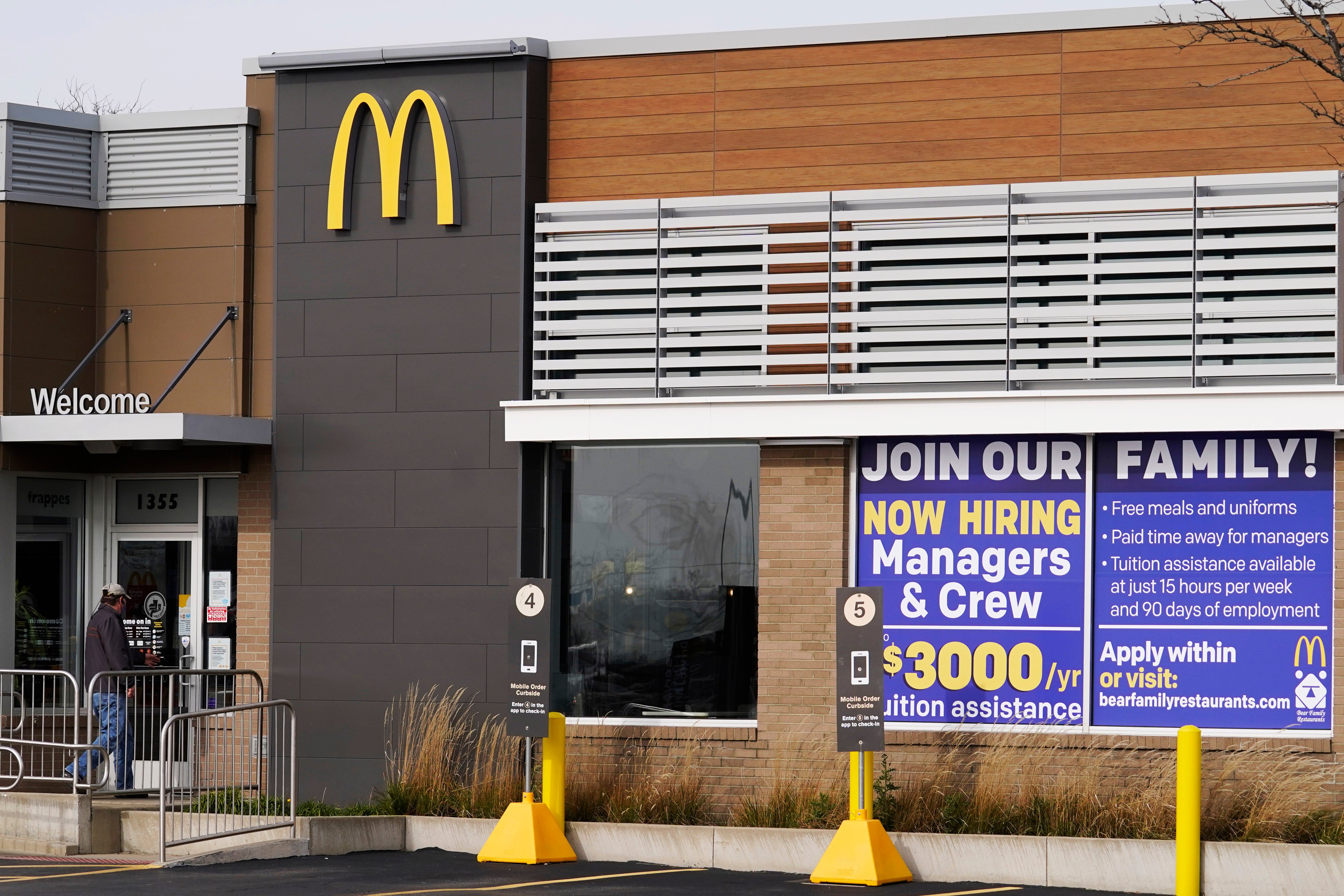US jobless claims fall to 547,000, another pandemic low
The number of Americans applying for unemployment aid fell last week to 547,000, a new low since the pandemic struck and a further encouraging sign that layoffs are slowing on the strength of an improving job market

Your support helps us to tell the story
From reproductive rights to climate change to Big Tech, The Independent is on the ground when the story is developing. Whether it's investigating the financials of Elon Musk's pro-Trump PAC or producing our latest documentary, 'The A Word', which shines a light on the American women fighting for reproductive rights, we know how important it is to parse out the facts from the messaging.
At such a critical moment in US history, we need reporters on the ground. Your donation allows us to keep sending journalists to speak to both sides of the story.
The Independent is trusted by Americans across the entire political spectrum. And unlike many other quality news outlets, we choose not to lock Americans out of our reporting and analysis with paywalls. We believe quality journalism should be available to everyone, paid for by those who can afford it.
Your support makes all the difference.The number of Americans applying for unemployment aid fell last week to 547,000, a new low since the pandemic struck and a further encouraging sign that layoffs are slowing on the strength of an improving job market.
The Labor Department said Thursday that applications declined 39,000 from a revised 586,000 a week earlier. Weekly jobless claims are down sharply from a peak of 900,000 in early January. At the same time, they're still far above the roughly 250,000 level that prevailed before the viral outbreak ripped through the economy in March of last year.
About 17.4 million people were continuing to collect unemployment benefits in the week that ended April 3, the latest period for which data is available, up from 16.9 million in the previous week.
The overall job market is making steady gains. Last month, the nation's employers adding 916,000 jobs, the most since August, in a sign that a sustained recovery is taking hold. The unemployment rate fell from 6.2% to 6%, well below the pandemic peak of nearly 15%.
Yet the still-high number of ongoing recipients shows that even as the economy has strengthened in recent weeks, millions of people — disproportionately low-income workers and people of color — continue to endure a loss of a job or income and have struggled to pay bills or rent.
The weekly data on applications for unemployment benefits is generally seen as a rough measure of layoffs because only people who have lost their jobs through no fault of their own are eligible. But during the pandemic, the numbers have become a less reliable barometer.
Many states have struggled to clear backlogs of unemployment applications, and suspected fraud has clouded the actual volume of job cuts. In addition, a supplemental $300-a-week federal jobless payment, on top of regular state unemployment aid, might have encouraged more people to apply for benefits.
For now, the economy is showing steady signs of recovering. Sales at retail stores and restaurants soared 10% in March -- the biggest increase since last May. Federal stimulus checks of $1,400 have been sent to most adults. And Americans who have kept their jobs have accumulated additional savings, part of which they will likely spend now that states and cities have loosened business restrictions and the virus wanes.
Economic growth is accelerating so fast that the principal concerns surrounding the economy have shifted from a high unemployment rate and anemic spending to bottlenecks in company supply chains and the difficulty some businesses say they are having in finding enough workers.
Those issues, in turn, have fed concerns that the Federal Reserve’s low-interest rate policies could fuel a spike in inflation. Last month, wholesale prices jumped 4.2% compared with a year earlier, the biggest 12-month increase in nearly a decade.
Still, consumer prices are, so far, rising at a more restrained pace. They increased 2.6% in March from a year earlier, mostly because of a jump in gas prices. Excluding the volatile food and energy categories, core inflation rose just 1.6% in the previous 12 months.
Economists expect inflation to rise steadily in the coming months because prices fell about a year ago when the pandemic first hit and the economy largely shut down. That makes comparisons to price levels a year ago look particularly large.
Fed Chair Jerome Powell says he expects that higher inflation to prove temporary and that supply bottlenecks will eventually clear as shipping picks up and factories produce more parts.